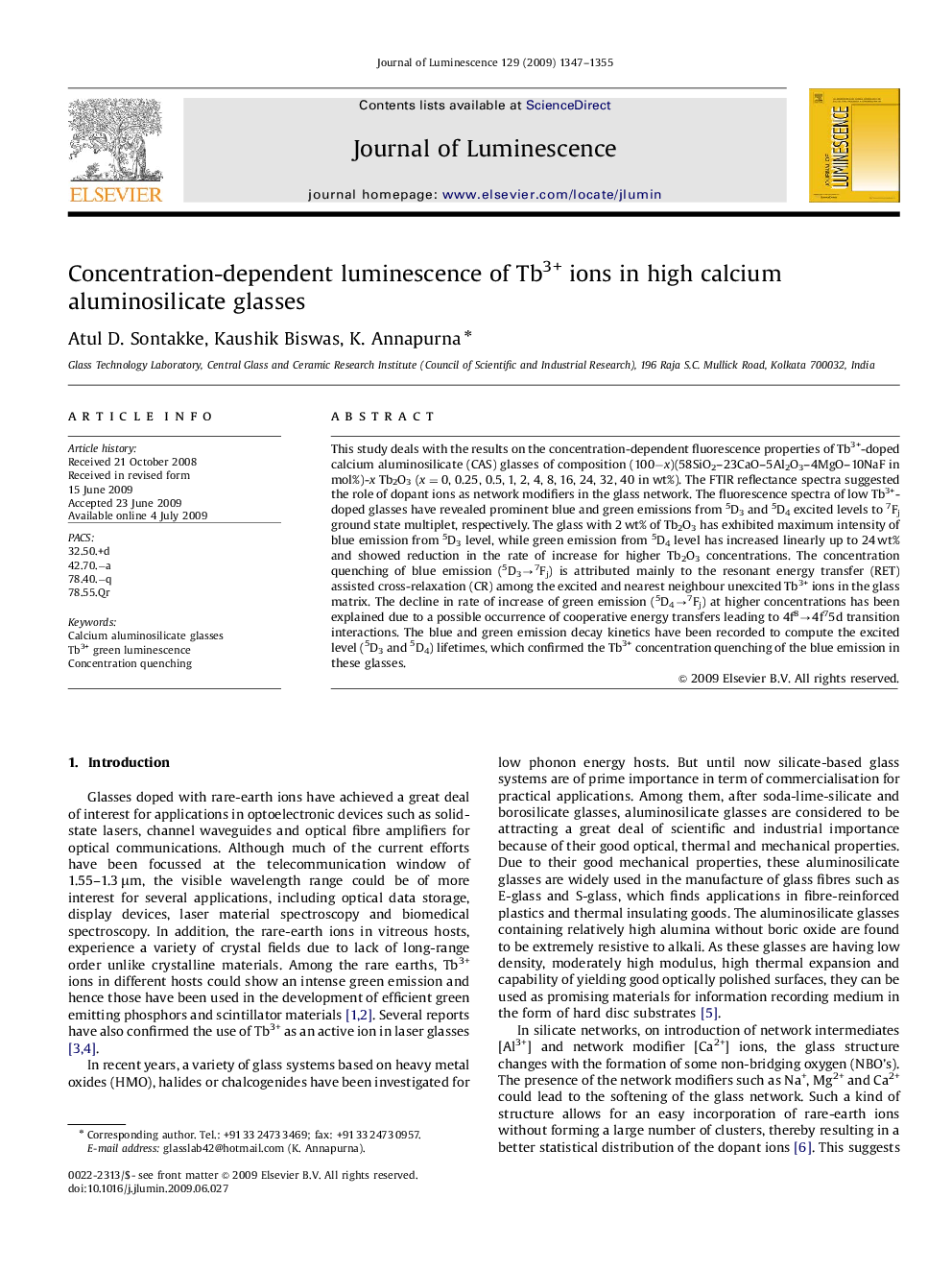| Article ID | Journal | Published Year | Pages | File Type |
|---|---|---|---|---|
| 5402914 | Journal of Luminescence | 2009 | 9 Pages |
Abstract
This study deals with the results on the concentration-dependent fluorescence properties of Tb3+-doped calcium aluminosilicate (CAS) glasses of composition (100âx)(58SiO2-23CaO-5Al2O3-4MgO-10NaF in mol%)-x Tb2O3 (x=0, 0.25, 0.5, 1, 2, 4, 8, 16, 24, 32, 40 in wt%). The FTIR reflectance spectra suggested the role of dopant ions as network modifiers in the glass network. The fluorescence spectra of low Tb3+-doped glasses have revealed prominent blue and green emissions from 5D3 and 5D4 excited levels to 7Fj ground state multiplet, respectively. The glass with 2Â wt% of Tb2O3 has exhibited maximum intensity of blue emission from 5D3 level, while green emission from 5D4 level has increased linearly up to 24Â wt% and showed reduction in the rate of increase for higher Tb2O3 concentrations. The concentration quenching of blue emission (5D3â7Fj) is attributed mainly to the resonant energy transfer (RET) assisted cross-relaxation (CR) among the excited and nearest neighbour unexcited Tb3+ ions in the glass matrix. The decline in rate of increase of green emission (5D4â7Fj) at higher concentrations has been explained due to a possible occurrence of cooperative energy transfers leading to 4f8â4f75d transition interactions. The blue and green emission decay kinetics have been recorded to compute the excited level (5D3 and 5D4) lifetimes, which confirmed the Tb3+ concentration quenching of the blue emission in these glasses.
Related Topics
Physical Sciences and Engineering
Chemistry
Physical and Theoretical Chemistry
Authors
Atul D. Sontakke, Kaushik Biswas, K. Annapurna,
